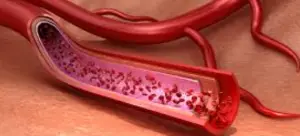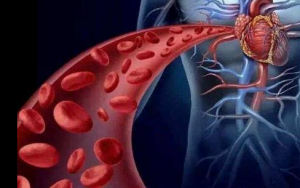Table of Contents
Vessels Elasticity. Why do the vessels Lose Elasticity?
What is Vessels Elasticity?
The heart and blood vessels form the body’s circulatory system.
Elastic vessels through which blood circulates are important for health, beauty and youth depend on them.
At the same time, due to problems with the vascular system, the body is not supplied with blood properly, which means it ages faster.

Our vessels carry oxygen and nutrients to every cell in the body. This works best when they are not clogged and elastic. Narrow and stiff arteries cannot supply enough blood to the body, resulting in disease and tissue aging.
Episodic injuries of small vessels are not so threatening, but chronic fragility can lead to serious illnesses in the future.
We will explain why the capillaries, or rather the walls of the capillaries, become weak or permeable.
What vessels are in the human body?
The circulatory system consists of the heart and several types of vessels. They differ in structure and inherent function, and damage has different consequences.
| Vessels name | Walls | Functions |
| Arteries |
|
The transfer of blood from the heart to the organs. |
| Veins |
|
Return of blood from organs to the heart. |
| Capillaries |
|
Connecting veins and arteries to organs for the exchange of nutrients. |
Veins and arteries are not easy to damage. This requires a strong mechanical effect, leading to external or internal bleeding.
We do not always notice capillary injuries, since they only cause subcutaneous hemorrhage. This is manifested through hematomas (in simple words, bruises).
How to understand that a person has weak blood vessels
In this case, we will not talk about the effectiveness or insufficiency of blood circulation. Although, when the organs do not receive oxygen, they also speak of the weakness of the system. We will focus on capillary fragility – the tendency to damage their walls.
Bruises and subcutaneous bruises periodically appear in everyone. But for some people this happens too often.
They do not have to hit – just a touch with a little force. This is not an individual feature of the organism, but a pathological condition that must be fought against.
A simple test is performed for diagnosis. A tourniquet or cuff is placed over the middle of the shoulder to create pressure (as when taking blood for analysis). If after 5-10 minutes a small hemorrhagic rash appears, you need to pay attention to this and try to improve the condition of the vascular walls.
When performing this test, it is important not to leave the tourniquet for long periods of time to avoid circulatory problems.
Why Vessels Elasticity become brittle?
The reasons for this phenomenon can be divided into two groups.
The first is hereditary or autoimmune diseases, as a result of which hemorrhages and hematomas appear. When diagnosed, treatment is required.
The second group is unfavorable conditions that weaken the body as a whole.
To restore the strength and elasticity of the elements of the circulatory system, in this case, folk remedies may be sufficient.
Vessels Elasticity and Diseases?
Schönlein-Henoch disease (other names – hemorrhagic vasculitis, purpura) directly leads to capillary fragility. Bruises are localized more often on the legs, sometimes rise to the abdomen and back, as well as the arms.
The disease is autoimmune and is associated with an excessive accumulation of IgA immune complexes.
It is also necessary to strengthen the vascular walls for patients with bleeding disorders. For example, children with hemophilia are bruised all the time.
With age, the consequences are aggravated, since all elements of the circulatory system suffer. There is a risk of life-threatening bleeding and cerebral hemorrhage.
Also, the blood vessels are weakened by the transferred virus diseases. The appearance of a hemorrhagic rash a week after the COVID 19 is common. In some cases, it becomes a reaction not to the virus itself, but to supplements to combat it.
How to prevent Vessels Elasticity?
Phlebologists argue that they need to be strengthened systematically, and not from time to time. Do not wait until varicose asterisks begin to appear on your legs or the first signs of circulatory disorders appear.

The blood vessel does not rest for a minute, so extra support never gets in the way. It is best not to experiment and consult your doctor first. He will clarify whether this or that means is right for you.
To slow down the aging of the blood vessels and therefore the entire body, you should avoid the following risk factors:
- Obesity. The fatty layer releases inflammatory substances into the blood that damage the inner walls of blood vessels. The more fat in the body, the more inflammatory substances.
- Cholesterol. It is deposited in blood vessels, which can lead to hardening.
- Sugar. High blood sugar destroys the protective layer of blood vessels and dissolves their cells.
- High blood pressure. If the body pumps blood through the vessels at too high a pressure, the walls can burst.
- Chronic stress. If the body constantly releases stress hormones, blood pressure rises, which damages blood vessels.
- Smoking. Nicotine attacks the inner walls of blood vessels and causes cell death. Holes and scars can form in the vessels.
- Chronic inflammation. Many of the factors already mentioned, such as obesity, smoking and poor diet, can cause chronic inflammation in the body. They also damage blood vessels and accelerate aging in the body.
Pay attention to the healthy food and do not forget about Supplements for Vessels Elasticity!
Our Top Picks of Vessels Elasticity
Another Top Pick to have constant Vessels Elasticity is Foot Massager
Massage also has a beneficial effect on the state of blood vessels. In this case, we are talking about the usual manual action.
It improves the general condition, stimulates blood circulation, however, it is contraindicated in thrombophlebitis.
Lymphatic drainage and vibration massage, on the other hand, are harmful to the vascular epithelium.
The main enemy of the cardiovascular system is cholesterol. This substance provokes the compaction of the walls of blood vessels. So it is even useful in moderate concentration.
There is a complex of products with a capillary- protective effect. This includes:
- Vegetables and fruits rich in vitamin C;
- Legumes;
- Buckwheat;
- Greens (especially sorrel);
- A fish;
- Milk;
- Seafood.
Decoctions of various berries, especially wild rose and black chokeberry, are very useful.
Healthy food doesn’t mean tasteless. Olive oil, cayenne pepper and turmeric can both improve blood circulation and add flavor to a dish.

The diet should be adjusted if it contains harmful foods. Strengthening blood vessels will not work if you constantly eat fast food, drink coffee, drink alcohol, smoke. They have exactly the opposite effect.
Vessels Elasticity Final Words
Quitting bad habits and maintaining a healthy lifestyle can strengthen not only the capillary walls, but also the cardiovascular system as a whole.
In addition to quitting smoking, alcohol and fatty foods, doctors recommend:
- Give the body moderate stress (especially the legs to avoid varicose veins);
- Refrain from lifting unbearable weights;
- Do not overheat the body (in the sun, in the bath);
- Wear comfortable shoes;
- Avoid tight clothing (especially with elastic bands).
Another useful component of a healthy lifestyle is a contrast shower. It trains the entire circulatory system (not only capillaries, but also veins and arteries).


![Number One Nutrition N1N Premium Blood Supplement [8 Powerful Herbs & Vitamins] All Natural Blood Flow Supplement with Hawthorn, Butchers Broom and Cayenne Pepper, 90 Caps](https://m.media-amazon.com/images/I/51UIYwxOsgL._SL160_.jpg)

